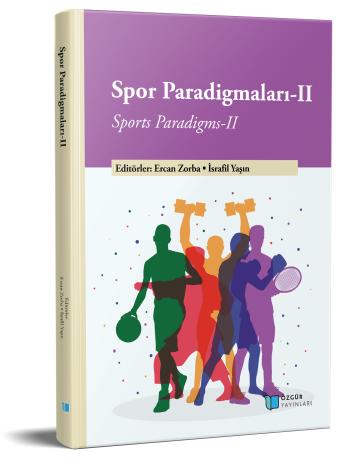
Çevikliğin Performans Açısından Değerlendirilmesi
Şu kitabın bölümü:
Zorba,
E.
&
Yaşın,
İ.
(eds.)
2023.
Spor Paradigmaları II.
Özet
Çeviklik kavramı geleneksel olarak kuvvet, denge, sürat ve yön değiştirmeler gibi biyomotorik özelliklerle ilişkilendirilse de, günümüzde yapılan bilimsel çalışmaların gösterdiği gibi çevikliğin ölçümünde yalnızca bu fiziksel özellikler yeterli değildir. Duyusal-bilişsel faktörler de çeviklik kavramını tamamlayan önemli bileşenlerdir. Bu nedenle çevikliğin daha kapsamlı bir anlayışı için algılama, sezinleme, oyunu okuma, karar verme ve hareket kalıplarını bilme gibi duyusal ve bilişsel yeteneklerin de değerlendirilmesi gerekmektedir. Duyusal-bilişsel faktörler, kişinin çevresini algılama ve anlama yeteneği ile hareket etme kararlarını etkileyen kritik bileşenlerdir. Örneğin, bir sporcu hızla değişen oyun koşullarında hızlı kararlar alabilmeli ve çevresindeki hareketleri doğru bir şekilde algılayabilmelidir. Bu tür yetenekler, çevikliğin gerçek dünya uygulamalarında başarıya ulaşmasını sağlar. Bilimsel çalışmalara göre, duyusal-bilişsel çeviklik özelliklerini değerlendiren çeşitli testler ve değerlendirme yöntemleri geliştirilmektedir. Bunlar, görsel algı, işitsel algı, hafıza, tepki hızı, öğrenme kabiliyeti, karar verme yeteneği gibi zihinsel süreçleri ölçen testler olabilir. Ayrıca, sporcuların hareket kalıplarını tanıma ve uygun zamanda uygulama yeteneklerini değerlendiren çeşitli görevler ve simülasyonlar da kullanılabilir. Bu çalışmada çeviklik tanımını ve çevikliğin performans üzerindeki önemini değerlendirmektir.

